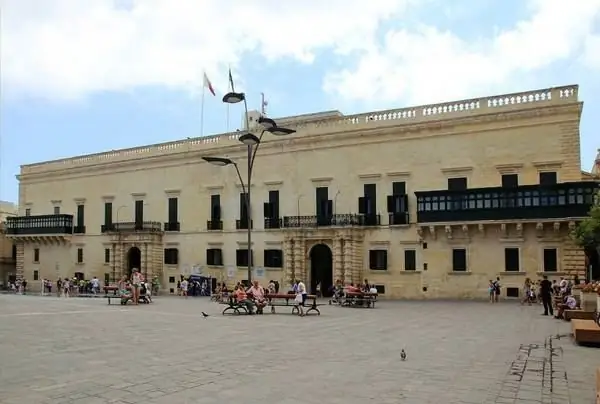
Description of the attraction
The Knights of the Order of Malta did not spare money for the construction of palaces and their decoration. However, when the "Palazzo" ("Palace") is mentioned in the conversation, it becomes clear to everyone what it is about. This is how the locals call the Palace of the Grand Master - a majestic building that overlooks one of the facades of the central square of Valletta. The palace was built in the second half of the 16th century. The famous 89 meters long wooden balconies were built only in the middle of the 18th century. Currently, the palace is the seat of the Parliament of Malta. The office of the President of the country is also located here. Some halls of the palace are available for inspection. The entrance ticket includes a visit to the Armory, which is open in the former stable at the palace. The collection of this museum numbers about 6 thousand pieces of ancient weapons and armor.
The palace has two courtyards (Neptune and Prince Alfred), which can be accessed through the gate on Republic Square. The courtyard of Neptune, planted with tall palm trees, is decorated with a fountain with a statue of Neptune. It is said that the sculpture was modeled after the Grand Master Vinyakur. In the courtyard of Prince Alfred, it is worth paying attention to the tower with an amazing chronometer, created by the master Gaetano Vella in 1745. The clock is adorned with figurines of bronze Moors, which beat with hammers, marking each hour.
Unfortunately, most of the halls of the palace are closed to visitors. Guests can see only two corridors with magnificent mosaics in the form of master's coats of arms on the floor and portraits of the former owners of the palace on the walls and 5-6 ceremonial rooms. Some of them can only be glanced from behind the ribbon, others are allowed to enter. The most remarkable is the Tapestry Hall, where twilight always reigns. It contains huge sumptuous tapestries woven in France in 1710 and donated to the order by Master Ramon Perellos. Previously, this hall hosted meetings of the knights, and then of the Maltese deputies. On one occasion, an angry MP threw an inkwell at an opponent and damaged a priceless tapestry. Therefore, the deputies from then on are prohibited from using pens. Only pencils are allowed.






